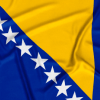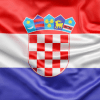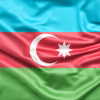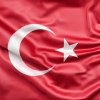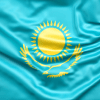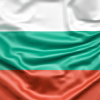ABOUT HUNGARY

Hungary, a landlocked country situated in Central Europe, is renowned for its rich history, vibrant cultural heritage, and diverse landscapes. With a population of over 9 million, Hungary boasts a unique blend of influences from its neighboring countries, resulting in a distinctive national identity that is shaped by a fusion of Eastern and Western European traditions.
Area – 93,030 sq. km;
Capital – Budapest;
National language – Hungarian;
Currency – forint (HUF).
Hungary’s cultural landscape is characterized by its unique language, Hungarian, which is distinct from its neighboring European languages and forms an integral part of the country’s national identity. The Hungarian people take pride in their rich folk traditions, including folk music, dance, and intricate crafts such as embroidery and pottery, which are celebrated through various cultural festivals and events throughout the year.
Map
Hungary, a landlocked country in Central Europe, boasts a diverse and fascinating geographical landscape that encompasses plains, hills, rivers, and lakes. With a strategic location at the crossroads of Eastern and Western Europe, Hungary is surrounded by several neighboring countries, including Slovakia, Ukraine, Romania, Serbia, Croatia, Slovenia, and Austria. One of Hungary’s defining geographical features is the Great Hungarian Plain, also known as the Alföld, which covers a vast expanse of the country’s southeastern region. Hungary is home to several natural caves and thermal springs, which have become significant attractions for tourists and locals seeking relaxation and therapeutic experiences.
Language
Hungarian, the official language of Hungary, holds a unique place in Europe as one of the few non-Indo-European languages spoken on the continent. his distinctive language, belonging to the Uralic language family, shares its roots with Finnish and Estonian, setting it apart from the majority of its neighboring languages, which are predominantly of Indo-European origin. The Hungarian language evolved and absorbed various influences from neighboring cultures, including Turkic, Slavic, and Germanic languages, while retaining its distinct grammatical structure and vocabulary. The Hungarian vocabulary reflects its historical interactions with neighboring languages, encompassing words derived from Slavic, Turkish, German, and Latin origins, among others.
CultureÂ
Hungary, with its vibrant and diverse cultural landscape, boasts a rich heritage shaped by a blend of historical influences, artistic traditions, and social customs. Nestled at the crossroads of Central and Eastern Europe, Hungary’s cultural tapestry reflects a fusion of Magyar, Slavic, Turkish, and Western European elements, creating a dynamic and multifaceted cultural identity that is celebrated both nationally and internationally. From its distinctive folk traditions and culinary delights to its thriving arts scene and architectural marvels, Hungary’s culture is a testament to the country’s enduring spirit, creativity, and artistic ingenuity.
ClimateÂ
Hungary experiences a temperate continental climate, characterized by four distinct seasons, with variations in temperature and precipitation throughout the year. Situated in Central Europe, Hungary’s climate is influenced by its landlocked geographical location, which results in continental weather patterns, moderate rainfall, and diverse temperature fluctuations. Hungary’s temperate continental climate, with its distinct seasonal variations, offers a diverse range of weather conditions and outdoor experiences throughout the year, catering to a variety of interests and activities that celebrate the country’s natural beauty, cultural heritage, and seasonal traditions.
EconomyÂ
Hungary, a member of the European Union (EU) and a key player in Central Europe possesses a diverse and rapidly evolving economy that is characterized by its dynamic industrial sectors, robust export-oriented industries, and strategic geographical location. With a population of over 9 million people, Hungary has emerged as a prominent economic hub in the region, with a strong focus on manufacturing, technology, and services, fostering a climate of innovation, entrepreneurship, and economic growth. The country’s economic trajectory, shaped by a blend of historical legacies and contemporary advancements, reflects its resilience, adaptability, and commitment to fostering a competitive and sustainable economic landscape.
PopulationÂ
Hungary, a vibrant country situated in southeastern Europe, has a population of over 9,7 million people, making it one of the more populous countries in the region. The country has a relatively diverse population, with various ethnic groups and cultural communities coexisting within its borders. Hungary’s ethnic minority communities, comprising various groups such as the Roma, Germans, Slovaks, Croats, Serbs, and others, have significantly enriched the country’s cultural diversity, contributing to its multifaceted identity and heritage. The mentioned ethnic groups have contributed to Hungary’s cultural fabric through their language, literature, folklore, and artistic expressions.
Transportation
Hungary’s modern transportation infrastructure is characterized by a comprehensive network of roads, highways, railways, waterways, and air transport facilities that facilitate seamless connectivity and efficient movement of passengers and cargo. The country’s strategic location at the crossroads of major European trade routes has positioned it as a crucial hub for international transportation, fostering trade and economic cooperation with neighboring countries and beyond. Hungary’s railway network, operated by the state-owned company MÃV, encompasses an extensive network of electrified and non-electrified lines that connect major cities, towns, and industrial regions across the country.







